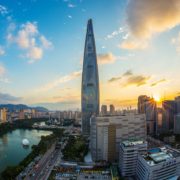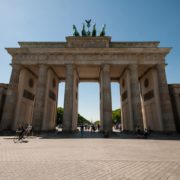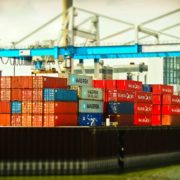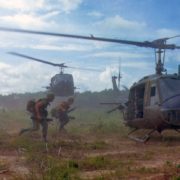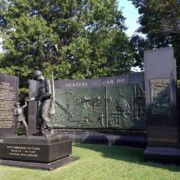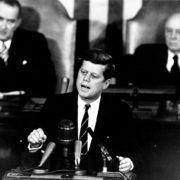How did South Korea become a developed nation?
What are the Four Asian Tigers? To understand how South Korea become a developed nation, we must start off the discussion with the understanding of the ‘Four Asian Tigers‘. The ‘Four Asian Tigers’ refer to the fast-developing nations of South Korea, Taiwan, Hong Kong and Singapore. These four Asian economies were identified as remarkable case studies, given their high levels of sustained economic growth from 1960s to 1990s. Due to their extensive focus on export-oriented industrialisation, these countries have caught up with developed countries and competed at the international markets
Topic of Study [For H2 History Students]: Paper 1: Understanding the Global Economy (1945-2000) Section B: Essay Writing Theme II Chapter 3: Rise of Asian Tigers from 1970s to 1990s [South Korea and Taiwan]
In the following section, we will examine the contributing factors that can explain the economic transformation of South Korea.1. Role of the Government a. Target Setting and Planning At the stage of economic development, the South Korean government undergone a process of central planning that involved target setting and resource management. Central planning was essential in the prioritisation of promising industries to nurture and expand, especially the family-owned chaebols. Institutionalisation of planning procedures took the form of the Economic Planning Board (EPB was established in 1961), which took the lead in formulating Five-Year Plans (FYP), which were important in charting the direction on a progressive basis. The EPB was accredited for the successful policy shift from import-substitution industrialisation (ISI) to export-oriented industrialisation, which propelled the South Korean economy significantly.
b. Policy Implementation The strategies employed by the South Korean government have evolved over time. At the initial stage, the South Korean economy was built upon the foundations of domestic production. This strategy is known as ‘import-substitution industrialisation‘, which refers to the use of artificial trade barriers to insulate the domestic economy from foreign competition. The main purpose of ISI was to nurture local firms, such that they will develop and expand to become the key driver of the South Korean economy. In this case study, the government imposed trade protection to develop labour-intensive sectors that produce textile, agriculture and light consumer goods. However, the South Korean government realised the economic gains of ISI were not sustainable as the above-mentioned goods yielded low-value economic growth. Hence, they turned their gaze towards foreign markets. This approach involved ‘export-oriented industrialisation‘. In contrast to ISI, EOI involved the production of exports (i.e. domestically-produced goods to be sold in the international markets) to promote economic development. In order for exports to be competitive, the South Korean government provided financial support to exporting firms, such as tariff exemptions on the import of raw materials for export production. Given that the foreign markets were much larger than the domestic market of South Korea, it was evident that the country enjoyed tremendous success, which was indicated by the increase in per capita income from $100 from 1963 to $6614 in 1990.2. Role of the Private Businesses [i.e. Chaebols] In addition to the notable contributions by the South Korean government, the economic transformation was made possible through the efforts of the private enterprises. In this case, the chaebols played a crucial role in the economic development of this Asian Tiger. Chaebols are family-dominated conglomerates that serve as the key pillars of support for the development of the South Korean economy. These major business corporations (e.g. Samsung and Hyundai) were formed in the 1960s under the auspices of the government, which provided extensive financial support and exclusion from stiff foreign competition. As such, these companies expanded and dominated the economy.
It was an economic success as the chaebols could compete in international markets against multinational corporations (MNCs) as they possessed large capital to innovate and improve the quality of exports. By 1980s, these major companies were self-sustaining and no longer needed government support to function. In return, these companies acted as the lifeline of the South Korean economy. For instance, Samsung occupied nearly one-fifth of South Korea’s Gross Domestic Product (GDP), implying that a single chaebol could support nearly 20% of the entire nation’s economy. However, the remarkable achievements of these chaebols were blemished by structural flaws that began to appear over time. The over-bearing influence of these major companies was observed in the monopolisation of markets, which crowded out small and medium enterprises (SMEs). The nearly-absent competition cultivated a culture of complacency, which resulted in the deterioration of product quality. Furthermore, the family-oriented structure of chaebols encouraged the top management to appoint family members, which translated to the growing inefficiencies of these corporations. As such, it was imperative for the government to intervene and address the dominance of chaebols.3. Role of Culture The ‘Miracle on the Han River’ can also be explained by the inherent characteristics of the South Koreans, particularly the cultural traits shaped by Confucianism. Similar to the Japanese, many look up to the South Koreans for their work ethics, as they are described as industrious and reliable. In economic terms, many firms benefited in terms of higher labour productivity levels, which contributed to increase in economic growth rates.
Additionally, the frugal mindsets of South Koreans were beneficially for economic developments as savings rate was high. This meant that many firms could take loans from banks to finance their investment activities, thus promoting economic growth.4. International Developments South Korea’s economic development can also be explained by the tremendous economic support provided by USA during the Cold War period. During and after the Korean War (1950 to 1953), USA supported Korea’s industrialisation policy as part of its strategy to stem the tide of Communism in Asia. For example, USA provided post-war financial aid to South Korea, in which the financial resources were important for public infrastructure projects, like road-building and airport construction. From 1950 to 1980, the estimates of American aid to South Korea amounted to nearly US$6 billion. Due to the efforts of the USAID (United States Agency for International Development), South Korea’s exports increased from US$4 million to over $150 billion in 1980. Therefore, it can be observed that USA played a significant role in the development of the Korean economy.
Points to Ponder Now that you have covered the four major factors that could explain the economic transformation of South Korea, consider the following pointers to integrate your knowledge for essay writing application: – Which role was more important in the economic transformation of South Korea: Government or Private Enterprises [explain why] – “The role of USA was most crucial in achieving the economic miracle of South Korea.” Assess the validity of this statement. [to be discussed in class]
The H2 and H1 History Tuition feature online discussion and writing practices to enhance your knowledge application skills. Get useful study notes and clarify your doubts on the subject with the tutor. You can also follow our Telegram Channel to get useful updates. We have other JC tuition classes, such as JC Math Tuition and JC Chemistry Tuition. For Secondary Tuition, we provide Secondary English Tuition, Secondary Math tuition, Secondary Chemistry Tuition, Social Studies Tuition, Geography, History Tuition and Secondary Economics Tuition. For Primary Tuition, we have Primary English, Math and Science Tuition. Call 9658 5789 to find out more. Most importantly, we make learning fun and meaningful. What are you waiting for? Let’s get started right away!
